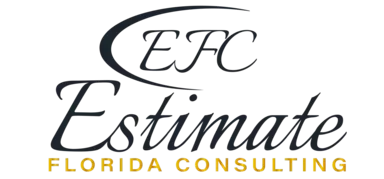How OSHA Compliance Certification Strengthens Construction Bids?
When you prepare a construction estimate you are forecasting every aspect of the project’s cost and schedule, including the resources needed to maintain a safe work environment. An accurate bid requires more than material and labor costs. It must also reflect the investment in training and compliance. OSHA compliance certification provides a clear framework for these safety measures and ensures that your proposal accounts for the true scope of regulatory requirements.
1. Budgeting training and audit expenses
Achieving OSHA compliance certification involves several specific line items. First, there are training costs for employees, which include instructor fees, course materials and facility charges. Next, on-site audits and gap analyses may require third-party consultants. Finally, administrative expenses such as recordkeeping, permit issuance and internal reporting must be included. By itemizing each component, you avoid the risk of under budgeting and last-minute adjustments that cut into profit margins.
2. Scheduling safety activities

Time allocated for safety training and audits has a direct impact on the project timeline. A typical certification process might consist of two full days of group training sessions followed by one day of site review and corrective action planning. Failing to build these activities into your master schedule can lead to unexpected delays when inspectors arrive or when staff must pause work to attend required sessions. Including safety milestones keeps your schedule realistic and prevents costly rescheduling.
3. Pre-qualifying subcontractors
Subcontractors play a vital role in construction projects, and their safety performance affects the entire site. Requiring OSHA compliance certification for all trades ensures each crew meets the same standard. When you include this requirement in bid documents you streamline the vetting process; subcontractors without certification must either obtain it or face exclusion. This approach reduces the need for on-site re-training and lowers the chance of non-conformance issues during inspections.
4. Minimizing compliance risk
Regulatory violations can halt work and trigger fines. An estimator familiar with OSHA standards can identify potential non-conformances before work begins. For example, fall protection requirements at elevated work areas or lockout/tagout procedures for mechanical maintenance must be planned for and scheduled. Addressing these needs in the estimate protects your firm by demonstrating proactive risk management and prevents the cost overruns associated with corrective measures in the field.
5. Strengthening client confidence
Clients view OSHA compliance certification as evidence of a responsible contractor. A bid that details training plans, audit schedules and corrective-action procedures show you have considered safety at every stage. This level of detail reassures stakeholders and sets your proposal apart. In public-sector or large commercial procurements, where safety metrics influence scoring, a well-documented certification strategy can be the deciding factor.
6. Continuous improvement through data
After project completion you can compare actual training hours, audit findings and incident reports against your original estimates. Did training require more sessions than expected? Were there any repeat deficiencies in audit results? Analysing these outcomes allows you to refine your cost and time assumptions for future bids. A feedback loop of data-driven adjustments leads to ever more accurate estimates and stronger competitive positioning.
7. Integrating certification into project controls
A robust estimating process links OSHA compliance certification milestones to project controls. Treat training completion, audit sign-offs and permit renewals as deliverables with specific dates. Digital platforms, such as FMTC’s portal, can generate automated reminders when certification credentials are nearing expiration, track progress in real time and support audit-ready reporting. This integration ensures that safety readiness remains visible to the entire team and avoids gaps that could disrupt work.
Conclusion
Incorporating OSHA compliance certification into your construction estimates transforms safety from a compliance checkbox into a strategic advantage. Accurate budgeting for training and audits, realistic scheduling of safety activities, careful subcontractor prequalification and proactive risk identification all stem from a clear understanding of certification requirements. By weaving these elements into your bids you protect workers, reduce surprises and demonstrate professionalism that clients trust. A safety-savvy estimate safeguards both your workforce and your bottom line and establishes your firm as a leader in responsible construction.

